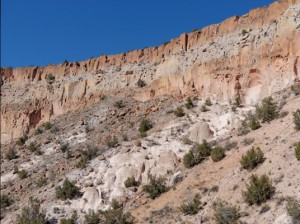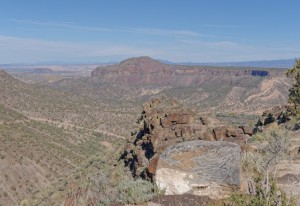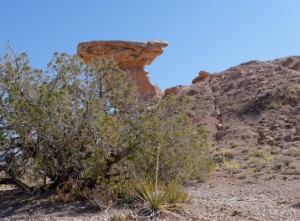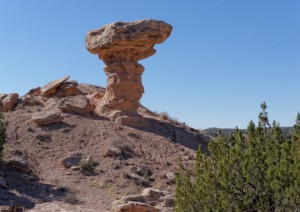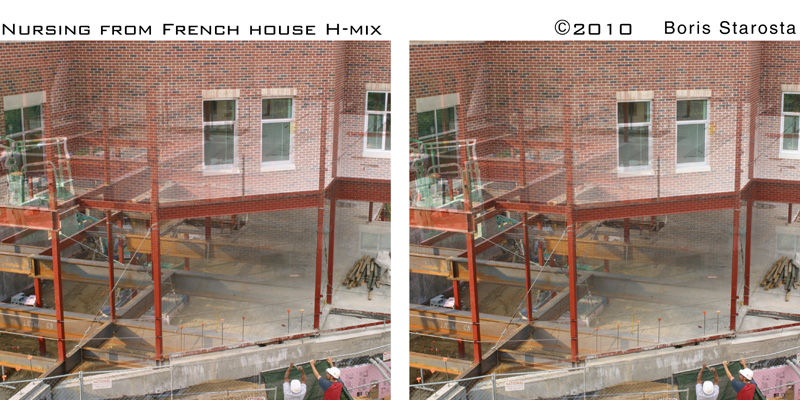
This is a digital “dupe” made by Gammatech from a file I sent them. The file for each of these images was about 2500 x 2000 pixels, about 1200 pixels per inch. I had them “print” eight stereo pairs like this onto an 8×10 inch transparency. They offered two resolutions for this, “8k” and “16k.” I asked them to print my file at “16k” because my file had a resolution around 12k. I might try doing it onto 70mm film next time – the cost is about the same either way. This imagery was obtained and processed digitally. Cameras: twin rig Canon D60 (6MP DSLR) with 28mm lenses, stereobase for this view about 9 inches.
Using a multiple exposure technique, buildings are rendered magically translucent, revealing the structure beneath the facade, and the foundation beneath the structure. Images were obtained over a period spanning 12 to 18 months, each time from a platform carefully repositioned, so that the camera(s) would be in exactly the same spot, matching position, direction and orientation in six axes. From about 2007 to 2010, I recorded the construction of a half-dozen buildings like this in and around Charlottesville. With its requirement for extreme accuracy, digital post-processing was almost as much work as the photography itself!
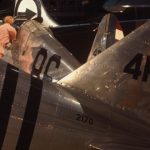 This is an interior, available-light image from the National Museum of the U.S. Air Force in Dayton. All those aluminum surfaces were just begging to be captured in stereo. The farthest tail looks to me like a B29, but I didn’t take notes about the fighters in the foreground. Can anyone identify them for us?
This is an interior, available-light image from the National Museum of the U.S. Air Force in Dayton. All those aluminum surfaces were just begging to be captured in stereo. The farthest tail looks to me like a B29, but I didn’t take notes about the fighters in the foreground. Can anyone identify them for us?